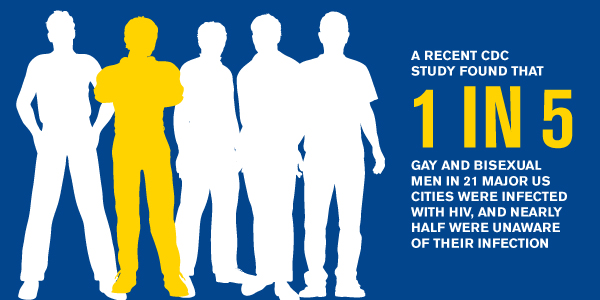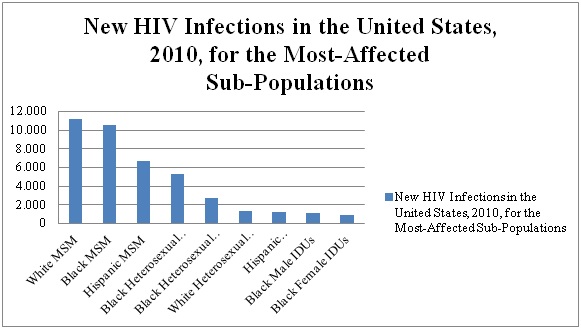
Written by: Infectious ‘77
Many do not know that homosexual men are banned from donating blood. The Food and Drug Administration (FDA) has banned all men who have had at least one sexual encounter with another male since 1977 from donating blood. The data used against homosexual men is collected and presented to the FDA by the Centers for Diseases Control and Prevention (CDC). These two organizations have set the rules and guidelines for all blood donors. There is a shortage in the world’s blood supply, and not many young adults are volunteering to donate. There are thousands of homosexual men willing to donate healthy blood to save lives. European countries recently lifted the ban, allowing homosexuals to donate blood. They have set guidelines and restrictions that have improved their blood supply. In the United States, the only solution to this problem is to lift the ban and allow homosexuals to donate blood.
Marathon day crowds are cheering on their runners as they complete the finish line of their 26.1 miles. Excitement and other inspirational emotions can be felt among the crowd. The air is cold; you could see the heat steaming off many of the runners’ brightly colored clothes. Moments later a blast goes off near the sidelines where innocent bystanders wait to cheer on the last remaining runners. Soon the streets become filled with police, firefighters, and ambulances. Triage stations begin to assemble, and blood donation stations begin to collect blood from healthy donors. A medical doctor who was participating in the marathon went to donate blood only to find out that he was unable to donate because he was a homosexual. He, like many homosexuals in America, is banned from donating blood. Although having good intentions to donate blood in order to save a life sounds great, it is not acceptable according to the FDA. The policy banning homosexuals from donating blood and vital organs needs to be reviewed and revised. Allowing healthy, non-HIV positive homosexual men to donate will ensure greater quality among blood donors and increase the surplus of available blood and hard-to-obtain organs for transplant patients. 
The Food and Drug Administration Policy on Homosexual blood donors
The following statement is part of the current policy that bans homosexuals or men who have sex with men (MSM) from becoming blood donors: “Men who have had sex with other men (MSM), at any time since 1977 [the beginning of the AIDS epidemic in the United States] are currently deferred as blood donors” (Food and Drug Administration, 2013). The FDA passed the policy in 1988, later revised it in 1992, and continues to abide by the outdated policy without change. The FDA stated that it would modify its policy if new scientific data and more accurate testing for HIV and hepatitis become available (Food and Drug Administration, 2013). While studying the policy, one finds that the statements made regarding accurate scientific data are contradictory. In a section of the policy, the FDA informed the public about the reduced risk of HIV transfusions stating, “Today, the risk of getting HIV from a blood transfusion has been reduced to about one per two million units of blood transfused. The risk of hepatitis C is about the same as for HIV, while the risk of hepatitis B is somewhat higher” (Food and Drug Administration, 2013). The CDC works together with the FDA to maintain public safety in all health related matters. The CDC has confirmed that current lab testing for HIV is 95 percent more accurate than the tests that date back to 1992 ( The United States Department of Health and Human Services). Therefore, the statement regarding medical research is invalid.
A policy bound by misleading data
The data used to support the FDA’s policy, which reports HIV infections among the MSM community, is misleading and biased. In one section the CDC reports that heterosexuals are included in their data pool, and in another report white heterosexual males are excluded from the data, making this an invalid report. In figure 1, there are four main groups that have been identified as those who have transmitted HIV infections. The CDC’s chart includes: MSM, Heterosexuals, Injection Drug Users, and MSM Injection Drug Users. As the data breaks down into subcategories (by race and sexual preference) one specific group of people is missing from the data: white heterosexual males. Without this data it can be said that it is scewed or invalid. The report suggests that white heterosexual males are not at risk for contracting HIV and therefore are allowed to donate. Doctor Vamvakas, a medical provider who studies Infectious Disease at the Univeristy Medical Center of Los Angeles, singled out the FDA and CDC regarding their biased, outdated policy. In his article, written in a well known medical journal called Transfusion, he stated that a female donor who has had sex with a man infected with HIV is allowed to donate blood as long as her blood test for the next 12 months is negative for the HIV antibody. However, a man who has had sex with another man, even if only once, since 1977 is banned from ever becoming a blood donor (Vamvakas, 2009). The FDA reported, “the deferral policy is based on the documented increased risk of certain transfusion transmissible infections, such as HIV” (Food and Drug Administration, 2013). The contradiction here would be that regardless of exposure, the female donor is still able to donate. Whereas the MSM, regardless of safe sex practices, is banned for life (Cantwell, 2005). 
Figure 1: The CDC Fact Sheet: New HIV Infections in the United States: HIV Infections by Route of Transmission. December 2012
Figure 2: Estimated New HIV Infections in the United States, 2010, for the Most-Affected Sub-Populations; CDC Fact Sheet: December 2012
Blood Born Pathogens: We are all at risk
The FDA continues to single out MSM for contracting and transmitting blood born pathogens such as hepatitis because of their “highly risky” behavior (Food and Drug Administration, 2013). The CDC has conducted studies that show everyone is at risk for contracting blood born pathogens such as Hepatitis. Hepatitis is a condition in which the liver becomes inflamed. The liver is an essential organ because it filters blood, processes nutrients, and fights infections. When the liver becomes imflammed or damaged it can affects the body’s response system. According to the CDC, “Each year about 70,000 Americans become infected with a type of acute viral hepatitis. Currenlty 1.2 million people have chronic Hepatitis B, and 3.2 million people have chronic Hepatatis C. Of those living with chronic hepatitis many do not know they are infected” (Centers for Disease and Control, 2010). This goes to show that regardless of “risky behavior”, much of the nation is at risk, and it is known that not all homosexuals are responsible for the hepatatis virus.
Blood Shortage: Europe Lifts ban to improve surplus
The World’s blood supply is at an all time low. An article written by ABC News regarding the nation’s major blood shortage stated that the Red Cross needs 80,000 units of blood on hand daily. However, they are only collecting less than 36,000 pints of blood a day (Zabarenko, 2013). The American Red cross confirmed that 39 percent of HIV-negative adults are eligible to donate blood in a given year, yet only 5 percent will actually donate (Goldberg & Gates, 2010). Eruopean countries have conducted studies and recently changed their donor policy allowing MSM to donate blood. These men were volunteers and did not partake in male to male sexual behavior for 12 months(Halvard, Schmidt, Hourfar, Schuttrumpf, & Seifried, 2012). They were routinely checked and screened for the HIV antibody. Once the HIV test was negative for a period of 12 months, the blood was then collected and screened. The blood platelet levels continued to show healthy levels of normal blood. This scientific breakthrough allowed Europe to change its policy (Halvard, Schmidt, Hourfar, Schuttrumpf, & Seifried, 2012). Following the studies conducted in Eruope, the Williams Institute at the University of California Los Angeles has confirmed that if the current MSM ban were to be completley lifted in the United States it is estimated that an additional 130,150 men would likely donate 219,200 additional pints of blood each year. If the United States followed Europe in lifting the ban, an estimated 53,269 additional men would donate blood each year (Goldberg & Gates, 2010).
There is no real reason as to why the FDA refuses to lift the ban or remotely open the topic up for discussion. The policy is outdated and calls for an update. Medical research today is more advanced than it was in 1992. Laboratory testing for HIV is accurate and can be even conducted in the privacy of your own home through an oral swab, and it takes only about a week to determine if the patient is HIV positive. Scientific research has also proven to be effective in removing HIV from semen. California passed a law in 2007 that allowed homosexual males who were HIV positive to donate their semen and have it cleansed from the virus to be able to have children (California Senate Bill 433, 2007). The women who were surrogate mothers were informed of the patients HIV status and instructed that the semen had been cleansed. The children, after being born, were tested to ensure they were not infected with the virus.
The homosexual community has been a target since the AIDS outbreak in the mid 70’s. The stigma today is that all homosexuals have HIV or AIDS, and that is not true. The CDC’s information sheets regarding HIV infections is clearly misleading and only shows data reported by specific groups. Of those groups, MSM are rated the highest because of “risky behavior”. One thing that the FDA failed to report was a case study that nearly ruined them due to human error. In 1993 HIV infected medication for hemophiliacs had been distributed throughout the world. Bayer, an American pharmaceutical company, discovered that the medication distributed had been infected with HIV. They decided to take it off the United States markets but failed to do so in European countires. This caused an estimated 6,000 patients who depended on the medcication to contract HIV (Hutchcraft, 1996). In reality everyone, regardless of their personal sex life, is potentially at risk for contracting any blood born pathogen.
____________________________________________________________________________________________
References
The United States Department of Health and Human Services. The United States Department of Health and Human Services 2007 National Blood Collection and Utilization Survey Report. The Centers for Disease Control and Prevention, CDC.
An Act to Ammend Section 1644.5 of the Health and Safety Code, relating to public health, Senate Bill No. 433 (Sacramento August 27, 2007).
Belanger, G. A., Mcfarland, W., Raymond, F. H., & Custer, B. (2013, November). If the Permanent deferral were lifted would men who have sex with men want to donate blood, and if so, who would be eligible? Retrieved December 13, 2013, from Http://go.galegroup.com/ps/i.do?id=GALE%Academic OneFile.
Cantwell, A. M. (2005, Noveber 27). The Gay Experiment That Started AIDS In America. Retrieved December 2, 2013, from Rense.com: http://rense.com/general68/gayex.htm
Center for Disease and Control . (2013, September). HIV Among Gay, Bisexual, and other Men who Have Sex with Men .
Centers for Disease and Control. (2009, March). CDC Fact Sheet Syphilis & MSM. Retrieved December 5, 2013, from CDC: http://www.cdc.gov/std/
Centers for Disease and Control. (2010, June). Viral Hepatitis. Retrieved December 11, 2013, from www.cdc.gov: http://www.cdc.gov/hepatitis
Food and Drug Administration. (2013, December). Food and Drug Administration: Blood donation from Men who have Sex with other Men Questions and Answers. Retrieved December 13, 2013, from http://www.fda.gov/biologicsbloodvaccines/bloodbloodproducts/questionsaboutblood/ucm108186.htm
Goldberg, N. G., & Gates, G. J. (2010). Effects of Lifting Blood Donation Bans on Men Who Have Sex with Men. Retrieved December 11, 2013, from The William Institute School of Law: http://www.law.ucla.edu/williamsinstitute
Halvard, B., Schmidt, M., Hourfar, K., Schuttrumpf, J., & Seifried, E. (2012). Sufficient Blood, Safe Blood; Can we have both? BMC Medicine . (B. Central, Ed.)
Hutchcraft, C. (1996, May 31). $640 Million Drug Firm Offer On Aids 6,000 Hemophiliac Victims would get $100,000 Each:. Chicago Tribune .
Vamvakas, E. C. (2009). Why are all men who have had sex with men even once since 1977 indefinitely deffered from donating blood? Transfusion , 49, 1073-1042.
Zabarenko, D. (2013, September 19). The Nation Has a Major Blood Shortage.






I already knew about this. I donate plasma often and have seen this rule. It didn’t make sense and I thought it was due to statistics. This rule is really fucked up.
I am gay and I donate anyway. I get tested every three months and have never once come back positive for HIV. Guess there goes the whole stigma that all gays have HIV or AIDS.
the rules are wrong and the idea is wrong the virus does not exist and all is an attemp for the goberment agencias to get attention, thats the way they rule they want attention , and they even kill to get it.